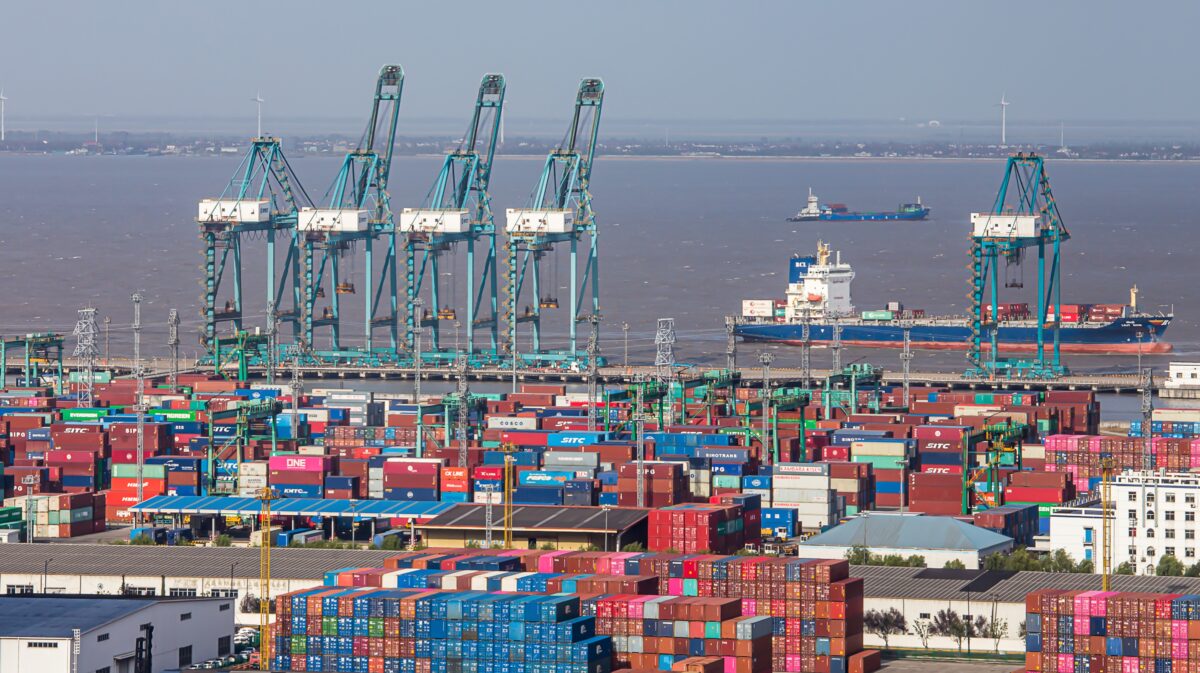Logistics managers are warning clients the two-stage lockdown in Shanghai could be worse than the initial COVID lockdowns.
“These lockdowns are possibly more severe than the initial quarantines in 2020 when COVID was first discovered,” Jon Monroe of Monroe Consulting told American Shipper. “Many people will tell you the ports are open. And this is true. But the port workers, factory workers and truck drivers are locked in their homes.
“This will limit the capability of factories to deliver containers to the ports. It may be almost impossible to get containers to Yangshan and Waigaoqiao.”
These are the latest COVID measures deployed by the government after two weeks of targeted temporary lockdowns failed to contain the breakouts.
The first phase applies to the eastern part of Shanghai and will run from Monday to Friday. The financial center is located in this part of the city.
Shanghai’s western part is the second phase, with the lockdown running Friday to the following Tuesday afternoon (April 5).
C.H. Robinson’s client advisory stated: “Offices and all businesses not considered essential will be closed and public transport suspended, creating major shortages on manpower and trucking availability. Our team in Shanghai are all working from home diligently for the time being and will continue to assess all areas of operation.”
The 3PL provider also provided some specifics in its advisory.

Meanwhile, Seko Logistics sent an alert to clients Sunday afternoon, warning of additional lockdowns.
Brian Bourke, Seko’s chief growth officer, told American Shipper, “This may be a significant impact to importers for all transportation modes, and we’re monitoring the situation with further updates from our team in China.”
A Worldwide Logistics email to clients explained that the surge in COVID testing in Shanghai is delaying the usual 12-hour response time — and thus slowing the ability of drivers who must have a clear test result in order to drive.
“Container movement between Shanghai and nearby industrial areas in Jiangsu province are restricted,” the email noted. “The situation is still developing. No reopening schedule has been announced yet. Carriers are shifting more allocation to Ningbo port or the river ports on Yangtze River to fill up the ship.”
Manpower is key to a port functioning efficiently. Without drayage, warehouses and factories running smoothly, port productivity suffers.

Using ImportGenius, American Shipper searched the bills of lading out of Shanghai. The breadth of products is large and also summer-related — from Dollar General products like beach towels, swim vests and garden tools, to Walmart goods such as pool products for the spring season. Other household items like Duracell batteries, Bissell vacuums, vinyl flooring, Ikea furniture and auto parts all leave out of that port.
“Some freight normally routed via Shanghai is now moving to Ningbo,” explained Alan Baer, CEO of OL-USA.
The drop containers out of Shanghai can clearly be tracked by SONAR in the past seven days.

The COVID containment measures are not curtailing the spread. Worldwide also stressed Qingdao is still seeing a 30% drop of trucking power and “the whole city transportation process is slowing down.”
The city of Tianjin’s COVID situation is described by the logistics company as “severe … t. Container movement around Cangzhou/Langfang/Bazhou/Tangshan are seriously restricted and waiting for further notice, most factories around these areas are locked down.”











